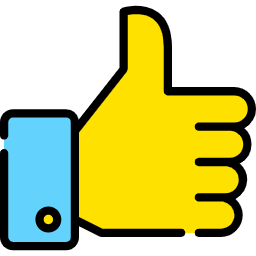Web2 and Web3 refer to different generations or iterations of the internet. Here are the key differences between Web2 and Web3:
1. Centralized vs. Decentralized: Web2 is characterized by centralized platforms and services, where power and control are concentrated in the hands of a few entities like tech giants. In contrast, Web3 is driven by decentralized technologies like blockchain, where power and control are distributed among users.
2. Ownership and Control: In Web2, users have limited ownership and control over their data and digital assets. Tech companies collect and store user data on centralized servers, making them vulnerable to breaches and misuse. Web3 aims to give users full ownership and control over their data through decentralized systems and cryptographic techniques.
3. Intermediaries: Web2 relies heavily on intermediaries like social media platforms, search engines, and online marketplaces, which act as gatekeepers and control the flow of information. Web3 seeks to eliminate or minimize the need for intermediaries by enabling direct peer-to-peer interactions and decentralized applications (DApps).
4. Trust and Transparency: Web2 platforms often lack transparency, and users must place trust in the platform operators to handle their data and transactions ethically. Web3 emphasizes trustlessness and transparency through decentralized consensus mechanisms and smart contracts that can be publicly audited.
5. Monetization Models: Web2 primarily relies on advertising and user data monetization as revenue models for platforms. In Web3, new monetization models are emerging, such as token economies, micropayments, and decentralized finance (DeFi), where users can directly participate and generate value.
6. Innovation and Collaboration: Web2 innovation is mainly driven by a few dominant players, and they control the development and updates of their platforms. In Web3, innovation is more open and collaborative, as anyone can contribute to the development of decentralized protocols and DApps.
7. User Privacy: Web2 platforms often collect and track user data for targeted advertising and personalized experiences. In Web3, privacy is emphasized through cryptographic protocols and decentralized systems that give users greater control over their personal information.
It's important to note that Web3 is still in its early stages of development, and many of its concepts and technologies are still being explored and refined.
1. Centralized vs. Decentralized: Web2 is characterized by centralized platforms and services, where power and control are concentrated in the hands of a few entities like tech giants. In contrast, Web3 is driven by decentralized technologies like blockchain, where power and control are distributed among users.
2. Ownership and Control: In Web2, users have limited ownership and control over their data and digital assets. Tech companies collect and store user data on centralized servers, making them vulnerable to breaches and misuse. Web3 aims to give users full ownership and control over their data through decentralized systems and cryptographic techniques.
3. Intermediaries: Web2 relies heavily on intermediaries like social media platforms, search engines, and online marketplaces, which act as gatekeepers and control the flow of information. Web3 seeks to eliminate or minimize the need for intermediaries by enabling direct peer-to-peer interactions and decentralized applications (DApps).
4. Trust and Transparency: Web2 platforms often lack transparency, and users must place trust in the platform operators to handle their data and transactions ethically. Web3 emphasizes trustlessness and transparency through decentralized consensus mechanisms and smart contracts that can be publicly audited.
5. Monetization Models: Web2 primarily relies on advertising and user data monetization as revenue models for platforms. In Web3, new monetization models are emerging, such as token economies, micropayments, and decentralized finance (DeFi), where users can directly participate and generate value.
6. Innovation and Collaboration: Web2 innovation is mainly driven by a few dominant players, and they control the development and updates of their platforms. In Web3, innovation is more open and collaborative, as anyone can contribute to the development of decentralized protocols and DApps.
7. User Privacy: Web2 platforms often collect and track user data for targeted advertising and personalized experiences. In Web3, privacy is emphasized through cryptographic protocols and decentralized systems that give users greater control over their personal information.
It's important to note that Web3 is still in its early stages of development, and many of its concepts and technologies are still being explored and refined.
Web2 and Web3 refer to different generations or iterations of the internet. Here are the key differences between Web2 and Web3:
1. Centralized vs. Decentralized: Web2 is characterized by centralized platforms and services, where power and control are concentrated in the hands of a few entities like tech giants. In contrast, Web3 is driven by decentralized technologies like blockchain, where power and control are distributed among users.
2. Ownership and Control: In Web2, users have limited ownership and control over their data and digital assets. Tech companies collect and store user data on centralized servers, making them vulnerable to breaches and misuse. Web3 aims to give users full ownership and control over their data through decentralized systems and cryptographic techniques.
3. Intermediaries: Web2 relies heavily on intermediaries like social media platforms, search engines, and online marketplaces, which act as gatekeepers and control the flow of information. Web3 seeks to eliminate or minimize the need for intermediaries by enabling direct peer-to-peer interactions and decentralized applications (DApps).
4. Trust and Transparency: Web2 platforms often lack transparency, and users must place trust in the platform operators to handle their data and transactions ethically. Web3 emphasizes trustlessness and transparency through decentralized consensus mechanisms and smart contracts that can be publicly audited.
5. Monetization Models: Web2 primarily relies on advertising and user data monetization as revenue models for platforms. In Web3, new monetization models are emerging, such as token economies, micropayments, and decentralized finance (DeFi), where users can directly participate and generate value.
6. Innovation and Collaboration: Web2 innovation is mainly driven by a few dominant players, and they control the development and updates of their platforms. In Web3, innovation is more open and collaborative, as anyone can contribute to the development of decentralized protocols and DApps.
7. User Privacy: Web2 platforms often collect and track user data for targeted advertising and personalized experiences. In Web3, privacy is emphasized through cryptographic protocols and decentralized systems that give users greater control over their personal information.
It's important to note that Web3 is still in its early stages of development, and many of its concepts and technologies are still being explored and refined.





